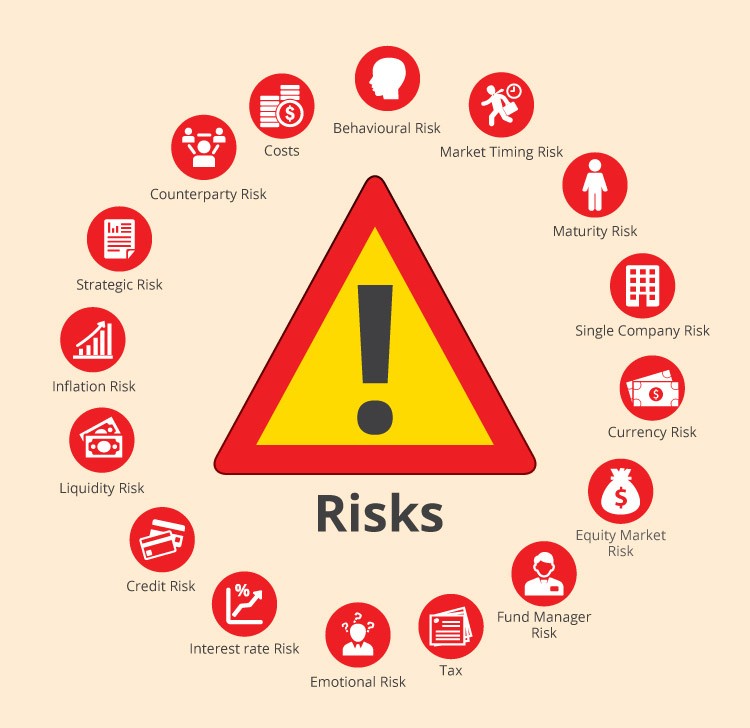One of the four pillars of our investment philosophy is the belief that risk and return are related. There is way more to it than the traditional view of how volatile is my portfolio. Not all risks are efficiently rewarded, and it is our job to ensure that our clients are exposed only to the most efficient risks in order that their chances of investment success are maximised.
What about cash?
There is no such thing as a risk free investment. Some may argue that keeping your assets as cash is risk free but over the long term, it is exposed to inflation risk, which sees the real value eroded over time. Furthermore, there is the risk of bank failure to consider. Whilst the Financial Services Compensation Scheme protects up to £85,000 of assets per individual per banking licence, anything above this is at risk; counterparty risk is not efficiently rewarded.
There are asset classes which have proven to be a much better hedge against the effects of inflation such as property, bonds and stocks. Therefore, if you want to see your assets at least keeping pace with inflation and retaining their real value, you need to invest them.
Unrewarded Risks
When you start to think deeply about the nature of risk you discover a maze of risk to be navigated, sorted, adopted or avoided. Any risk that can be managed relatively easily without adding too much cost tends to be better avoided. There are many, here are some examples:
Market Timing Risk
Another inefficiently rewarded risk is market-timing risk. When you invest can have a big impact on the value of your portfolio due to short-term fluctuations. However, it is impossible to consistently accurately predict the movement of the market. The tens of millions of trades that take place each day which set the price of each security means that the price accurately reflects value of each security at the present moment. At bdb, we believe that large sums should be invested in tranches to minimise the effect of short-term market instabilities.
Concentration Risk
Investment specific risk, specific to individual companies, can be avoided by diversification. More broadly, there are also risks specific to asset classes, market sector and geographic location.
Home Bias
This one is currently quite topical; Some people may be concerned about the performance of their portfolios due to the uncertainty surrounding Brexit. Here at bdb, our portfolios are not concentrated in the UK, but globally diversified by market weight. Logically, why should we expect the UK to outperform any other geographic location? The UK has produced an annualised return of 8.75% (FTSE All Share) since 1988 compared to 9.13% for the rest of the World (MSCI AC World ex UK). Biases in a portfolio introduce concentration risk which is not efficiently rewarded.
So which risks are worth taking?
Market risk is the extent to which you expose yourself to a certain asset class. Asset classes each have their own risk and return characteristics. From a portfolio perspective, it is the risk of the value of your investment falling, due to factors which affect the whole of the financial markets. An investor cannot avoid it. It is the premium that an investor pays for the expectation of a return. The more we tilt our portfolio to a higher risk asset class such as equities the more return we can expect. For us this is a good risk.
Why do we expect a return from shares?
Equities (shares in companies) have had an annualised return of 8.96% (MSCI World) per annum from 1985 until the end of 2018, where bonds (loans to companies or governments) have had an annualised return of 6.92% (FTSE World Government Bond 1-5 Years) over the same period. In the event of company failure, the bond holders receive their capital back first and hence equities are riskier than bonds as risk of loss is greater and consequently a greater return can be expected.
So what can I do?
There is only one way in which to increase your expected return without taking on additional risk, and that is to lower cost. The most efficient portfolios eliminate those risks which cannot be associated with a higher return expectation.
Before you jump in with both feet take another look at that investment opportunity using a wide angle risk lens rather than the magnifying glass of volatility alone.
At bdb, we believe in a low cost, evidence based approach to investing to deliver robust financial plans to enhance our client’s lives.

Posted by: Samantha Hawken | Posted in: News